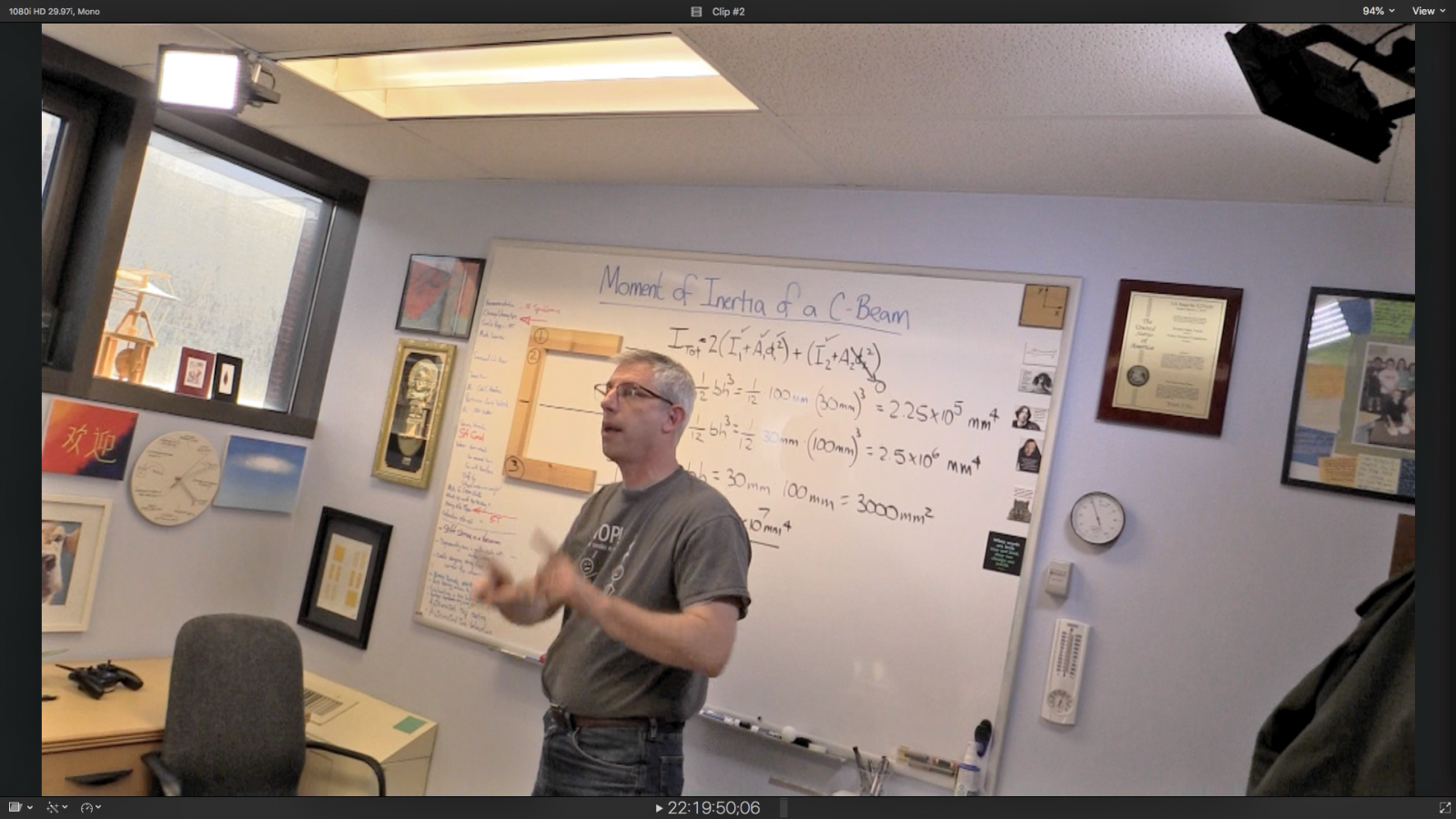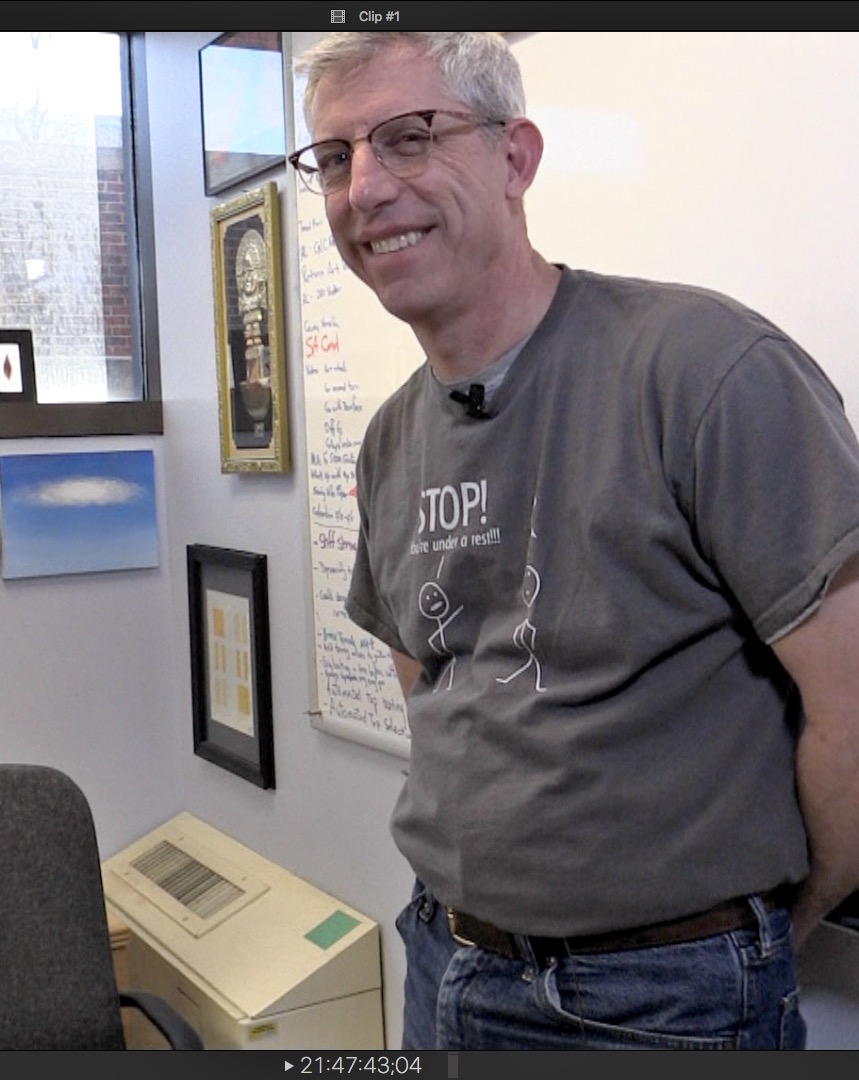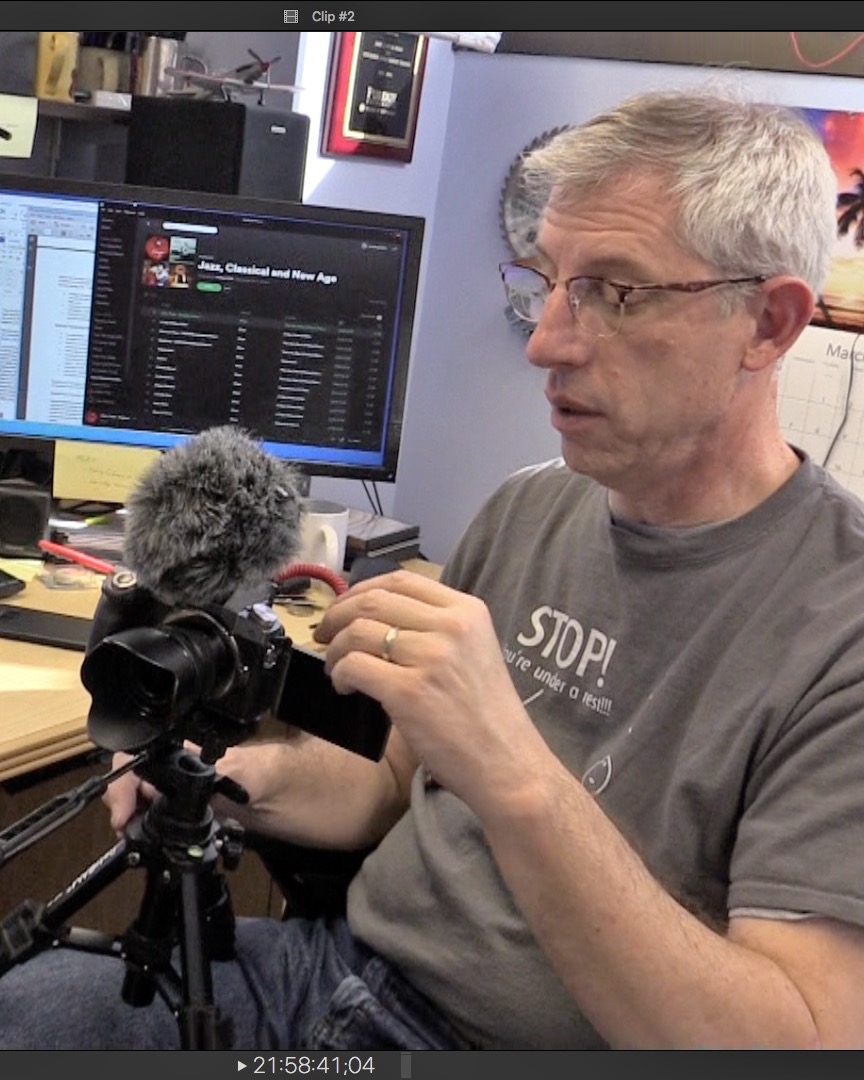
An effort to help mechanical engineering technology students understand challenging mathematical concepts has blossomed into a popular YouTube channel with hundreds of videos and millions of views. This spring, the channel earned its 30,000th subscriber.
Mark French, professor of mechanical engineering technology, filmed his first video in December 2009 using an inexpensive camcorder he had originally intended for recording lectures. He did not anticipate the channel’s eventual popularity.
“At first, it was just the problems students in my Strength of Materials course were having,” explained French. “Whenever they got stuck, I’d shoot a quick video. The very first one got 500 hits quickly. I was pretty sure that my 73 students didn’t watch it that many times.”
 When viewers from around the world began sending emails, French began realizing how much reach the videos have.
When viewers from around the world began sending emails, French began realizing how much reach the videos have.
“The first viewer to contact me was from Austria,” said French. “I thought, ‘Okay, he’s definitely not one of mine.’ I don’t know how he found my videos, but he had a question I was able to answer.”
Three-quarters of French’s viewers are outside the United States. YouTube data has shown that the 270 videos he has produced to date have been seen in every country on the planet, even in remote places like the Svalbard and Jan Mayen Islands.
“I had to look up where they are,” French said, noting that the islands are between Norway and Greenland, above the Arctic Circle. “You wouldn’t think there are many English speakers there. It’s a neat way to show engagement beyond the boundaries of Purdue or even the United States.”
Over the years, French acquired better video, lighting and audio gear, aiming to balance quality of production with frequency of posting.
“There are two ways to do this,” he said. “One is with lots of production value, with animation and complicated setups. The other is what I’m doing. I can set up and do a video in an hour or two. It’s just me standing at my board, maybe with some demo hardware, running through what’s basically a homework problem. Because I can turn them around so fast, I can respond to needs much more quickly.”
French has covered topics like axial deformation, cantilever beams, guitar strings, load shear, Mohr’s circle, strain gauge rosettes, pogo sticks, automotive crash testing and numerous others. But he never knows how individual videos will be received. Some have been viewed hundreds of thousands of times; others have been seen by only a few hundred viewers.
 “I did one where I was riding a skateboard down the hall and purposely slammed into a wall to show deceleration,” recalled French. “I thought it was great, but it didn’t get very many views. Another one showed how beams like floor joists or diving boards change stiffness. I thought it was so simple as to be not worth doing, but it was a big hit. I decided the viewers are right. As long as I respect their needs, everything turns out fine.”
“I did one where I was riding a skateboard down the hall and purposely slammed into a wall to show deceleration,” recalled French. “I thought it was great, but it didn’t get very many views. Another one showed how beams like floor joists or diving boards change stiffness. I thought it was so simple as to be not worth doing, but it was a big hit. I decided the viewers are right. As long as I respect their needs, everything turns out fine.”
Earlier this year, Purdue gave French the 2018 Charles B. Murphy Outstanding Undergraduate Teaching Award. Teaching is a role that French relishes in both his work and his videos.
“As a faculty member at a research university, I take the research part seriously and try very hard to earn my place here,” he said. “But at heart, I’m an engineer and a teacher. I derive satisfaction from figuring out a solution to a problem which is clean, clear and logical, and then explaining it. It’s a very personal thing, probably similar to what people feel when they write stories, paint, draw, or compose a poem.”
Although responding individually to every viewer is not possible, French plans to keep producing new videos for the series, which in recent years he has titled “Brain Waves.”
“A more sophisticated production setup would help videos look cleaner, but there would be fewer of them,” French said. “I hope to add more hardware to future videos, doing something that’s concrete and real, taking those results and then coming back inside to finish the problem. I like videos that have more of an experimental character to them.”
French is grateful for support he has received from Gary Bertoline, dean of Purdue Polytechnic, who identified funding to continue production of the video series over the summer.
“It’s an eloquent statement about what the dean thinks about our role in teaching,” said French. “I’m very fortunate to have found a place where somebody like me can thrive.”
Videos
Brain Waves / Behind the Scenes
Brain Waves / “Moment of Inertia of a C Beam (or U Beam)”
As we filmed the "behind the scenes" video above, Prof. French was filming the video below.
Additional information:
- Brain Waves / PurdueMET (Mark French’s YouTube channel)
- Brain Waves / Behind the Scenes (video)
- Brain Waves / Moment of Inertia of a C Beam (or U Beam) (video)
- French receives Outstanding Undergraduate Teaching Award
- Guitar-building STEM education initiative impacts 20,000 students nationwide
-
Techies Today Episode 001: Mark French, Purdue's Surprise YouTube Star

